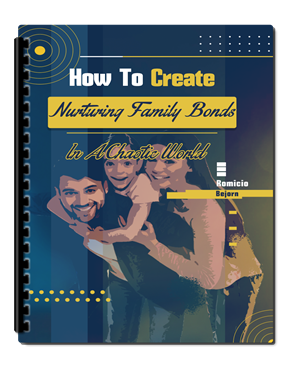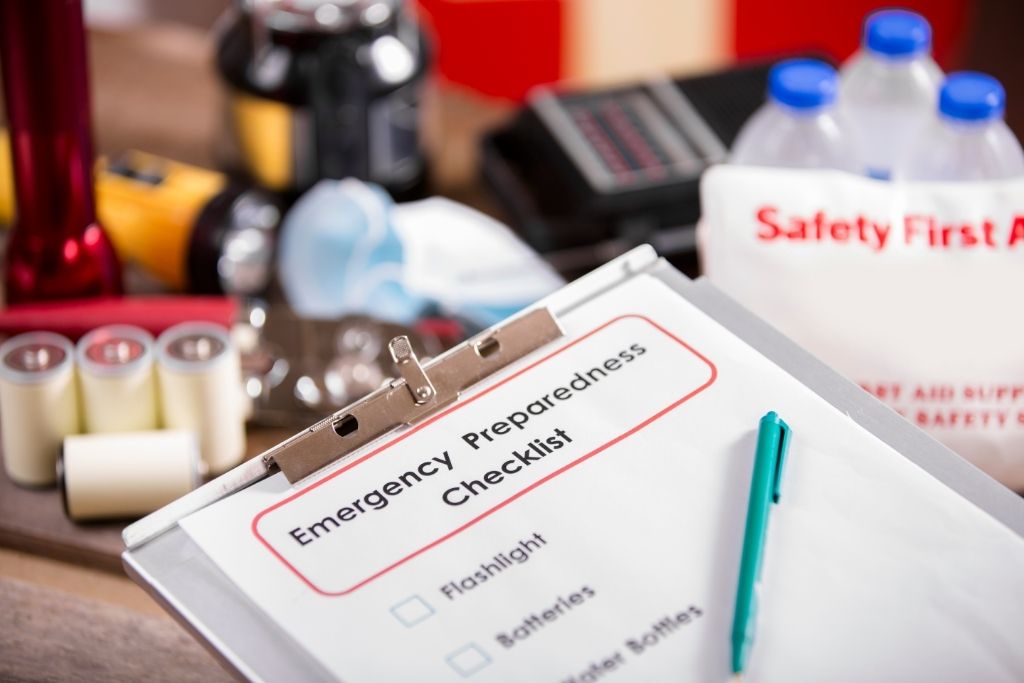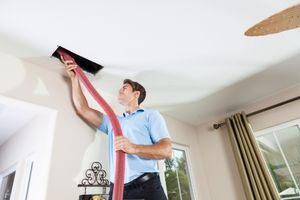Unfortunately, disaster is everywhere. It’s in the streets, it’s inside your campuses, and it can even be found inside your home. The question is not whether we are safe, because no one is really that secure anymore. The question then becomes, whether or not we can do something to lessen the odds of ever becoming a victim.
First, what is a disaster, anyway? By definition, a disaster is any catastrophe or tragedy that occurs and can also be identified as destruction or calamity. That doesn’t sound good at all, does it?
We should be alarmed at the mere mention of this term and we have good reasons to be because there are so many kinds of emergency disasters.
Think of natural disasters such as earthquakes, hurricanes, floods, tornadoes, tsunamis, cyclones, or even fires.
Accept the fact that these calamities are in all places. There are areas that are more prone to tornadoes or earthquakes and there are also some that are more exposed to cyclones.
A disaster is a fact of life that no one can evade 100 percent. Calamities strike when you least expect them, and sometimes they take lives by the hundreds and even the thousands.
Although disasters can be anywhere at any given time, still, you can do something to lessen its catastrophic effects.
Each family (or even individuals) should be organized and ready when the unexpected decides to show up.
Your family is the best team during disasters because you all know your strengths and weaknesses.
This inside knowledge can be used to increase the safety of each other during emergencies.
A family disaster plan is an absolute MUST for every family, no matter where you are in the world.
Primarily, your family should be able to point out specific disasters that are common in your area.
It would be silly to prepare against tornadoes when they do not or have never even occurred in your area, in the first place. As a family, you should know what disasters usually strike in your community.
To be on the safe side, it’s best to plan for any type of disaster, especially the ones that are common to your geographic location.
As a family, you should be able to agree on what to do and whose role is what when the calamity happens. Each person should have an equal task in countering the catastrophe.
Again, being prepared way ahead of the disaster is imperative. It is ridiculous to start in a panic just when the family is coming face to face with, say, a flood.
Bear in mind the necessities that could be cut off when calamities happen such as no telephone service (or worse, no cell phone signals), no electricity, no food supplies, no water, and etc.
Your emergency preparedness plan should center on establishing the most important part of survival, food, water, and asking for assistance.
If you and your family are not confined inside your home by the disaster, it is best to go to the nearest emergency management office in your area.
If you’re at home and are not able to go out, try your best not to panic, which can be easier said than done amidst a disaster.
Although help could take time to arrive, most probably it will, and the best thing to do is to wait it out and have ample food and water while waiting for help.
Now that I’ve briefly defined what a disaster is, let’s cover the Top 20 Ways To Prepare For An Emergency At Home…
1)) Prepare For Everyone In The Home
When you are putting together a plan to prepare in the case of an emergency, it is very important to remember to plan for not only yourself and your children, but also for your family pets and any guests who could potentially be with you at the time of the emergency.
Many people fail to plan for their pets, and unfortunately, many pets are lost each year as a result.
Sometimes, you have to act in the best interest of the people, and there is nothing that you can do in those situations.
But it is definitely worth putting together an emergency plan for your pets because we love them as if they’re family members.
You’ve probably heard the phrase; the best time to get vehicle insurance is before you have an accident.
So, apply this same mindset to emergency preparation.
2)) Establish Pre-Determined Meetup Locations
Make sure that everyone knows where they are. You should generally have 3 to 5 locations that everyone in the home knows about where you can meet up in the case of separation during an emergency.
This could be a neighbor’s front yard, a local business, and possibly a relative’s home a few miles away.
This way, you will not have to wander around looking for family members because they too will make their way toward the pre-determined locations.
3)) Attach Your Appliances to the Floor
Particularly in flood-prone areas, it is recommended that gas appliances be attached to the floor.
Your appliance will most likely be destroyed in the case of a severe flood; however, the risk that you are alleviating is that of your gas line rupturing, presenting a possible explosion risk within your home.
You can use straps, mounting bolts, or another method for attaching the appliances to the floor, or even to a wall in a stud.
The key is to attach your appliances to a wall that’s constructed of solid material.
4)) Stock Up On Flashlights and Batteries
It is always important to have a flashlight on hand. In general, most people use flashlights ten or more times during the course of a year.
A good quality flashlight should be on hand in the kitchen or other central rooms of the home.
In addition, everyone should have a flashlight near their bed in case of a middle-of-the-night emergency.
There are now a lot of emergency flashlights that do not require batteries. Instead, they are powered by a hand crank and have a halogen bulb for added brightness.
5)) Carefully Inspect Your Home
One of the first things to do when planning for emergency preparedness is to get to know the ins and outs of your home.
At a minimum, you should know where all of your utility shut-offs are located.
You should also take a look around to see if there are heavy objects which could fall on someone and result in an injury.
Take care to check the handrails on your stairs to ensure safety in a situation where the stairs are unstable.
6)) Reconsider Your Storage Areas
Take some time to look through your storage areas to ensure that the heaviest items on shelves are at the bottom, near the floor.
Make sure that any storage shelving is secured to the wall in some way. Consider whether there is any risk of a fire, or if your storage area contains little more than fuel should a fire start.
Clean out old things that you do not plan to use, in order to reduce a fire hazards.
7)) Locate All of the Chemicals in Your Home
It is important to know where your chemicals are stored, and whether they present an additional risk in the event of an emergency.
For example, you should never store ammonia and bleach in the same location!
Many people do not consider this, however, should the two combine the results could be very dangerous due to the emission of toxic gas.
Paint, paint thinner and other chemicals should NEVER be stored near your furnace, water heater, or any other appliance with a lit pilot light.
8. Find a Safe Spot in Your Home
Depending on the type of natural disasters to which your location is prone, this spot can range from the basement to the attic.
Generally, everyone should have a high-ground location in the case of a flood.
However, if your area is prone to earthquakes you would most likely want to be somewhere like under a sturdy door frame.
If tornadoes are common, you should have a below-ground location, with little that can fall on you from overhead.
9)) Have a Written Plan
Many people spend a lot of time putting together an actual emergency plan, but they never put it in writing.
Well, in the case of an emergency there is a good chance that someone will miss a critical step in the process of evacuation, etc.
Therefore, always have a copy of your plan for each member of the house. Perhaps the plan can be stored in a nightstand drawer with a flashlight.
Tip: You should laminate each copy of your written plan in order to provide protection for the document.
10)) Review Your Emergency Plan
You are not the only one who needs to be familiar with your emergency plan unless you live alone.
Make sure that everyone knows his or her responsibilities according to the plan.
And, make sure that you review the plan on occasion to make sure that it still works for you and that everyone knows exactly what to do in the event of an emergency.
I recommend that you and your family or the members of your home do practice drills to increase the level of preparedness.
11) Invest In Emergency Lighting and a Backup Generator
In the event of a fire or power outage, it is a good idea to have some sort of emergency lighting available.
Invest in lighting that can be moved around as needed or anchored into place.
Flashlights are one example of emergency lighting, but there are other types of battery-operated lights available on the market.
Every home should have some type of backup generator in place to provide power in the event of a disaster, just in case the power does go out.
12)) Check Out Your Landscaping
During a severe storm, most homes are not damaged by the storm itself. Instead, they are damaged by falling limbs, trees, and power lines.
The power lines are generally brought down by falling limbs and trees.
Therefore, it is important to check your landscaping at least annually to ensure that all of the trees and shrubs surrounding your home are well-manicured, healthy, and not touching your home or power lines.
13)) Never Store Fuels Inside Your Home
While it is tempting to keep these fuels in the home for convenience, in the case of an emergency they could cause an explosion, fumes, etc.
Sadly, many people have died from various types of fumes during natural disasters.
So, consider a storage shed or garage as a better location.
14)) Smoke Detectors Are A Must
Wildfires are only one type of emergency, high quality smoke detectors can tell you about a fire in your home and depending on the location, a neighbor’s home.
It is important to have a smoke detector on every level of your home so that in the event of a fire everyone will hear it sound.
I recommend that you have professionals install smoke detectors that run on your home’s electrical system that contain backup batteries because when one goes off, they all do.
You might even want to call your local fire department for installation recommendations or assistance.
15)) Talk To Your Schools
If you are a parent of school-aged children, it is important that you know exactly how the school will react in the event of an emergency in the school or in the local area.
Your school must have a written response plan, including information about how parents will receive information.
You can contact the school via telephone to have questions answered, or you can request a copy of the emergency preparedness plan.
Fortunately, with today’s advanced technology, school districts are now able to send broadcast messages simultaneously via text message, email, and voicemail to parents or guardians.
16)) Determine the Fastest Route to Local Hospitals
In the event of an emergency, you may need to take someone to the hospital. If the
emergency is just at your home, traffic may not be an issue and you can use the shortest possible route.
However, in the event of road closings, heavy traffic, bad weather, etc. you will probably want to make the most out of the way route to get where you need to go.
This may seem like a bad idea, but it will take less time than sitting in heavy traffic on the main roadway.
You can also use one of the many Mobile APPs to help you find the quickest route.
17)) Get To Know Your Neighbors
It is always a good idea to know who your neighbors are, and what their experience is. For example, if you have a neighbor who is a nurse, you might be able to call on them should someone be severely injured until the paramedics arrive.
If there is a neighbor who is home during the hours that you work, you could give them your contact information in the event that there is an emergency and offer to do the same in return.
18)) Trusted Persons Nearby Should Have Access
Make sure that someone nearby that you trust has a set of keys or the passcode for your garage door. It is important that at least one other person has access to your home in the event of any type of emergency.
That person should know where your telephones are located as well as your utility and power shut-off locations. Offer to do the same in return.
19)) Develop an Evacuation Plan
This is a part of an overall emergency preparation plan, however, it is important that more than any other part of the plan your entire household knows what to do should there be a need to evacuate the home.
Do you remember earlier when I recommended that you do drills?
Well, this is a part of that process.
Pick out a spot in a neighbor’s yard to assemble once everyone is out and make it clear that everyone is to stay in that spot so that heads can be counted.
This is critical so that in the event of a fire you can inform the fire department whether there might still be someone or even a pet still inside.
20. Carry Pictures of Your Kids
Believe it or not, carrying photos in your wallet is a fantastic idea, and not just because you can show them off.
In the event that a family member turns up missing, you will have photos with you that can be shown to authorities immediately.
Better yet, why not also have pictures of everyone saved on your smartphone?
This can make all of the difference when it comes to finding a missing person.
Conclusion
Emergencies such as natural disasters can be very scary for everyone, especially for children. Make sure that everyone is able to get plenty of rest and that children are allowed to openly share their feelings.
Too many parents think it is best not to tell them what is going on, but that tends to make them more afraid as they definitely know something is taking place around them.
Hopefully, you will never have to experience a natural disaster or other emergencies, but it is wise to be prepared.
Having the essential items in place that you will need can make the difference between your survival after the event takes place.
It is a good idea to practice emergency procedures for natural disasters with your family as well.
Your home is a place to live and relax in, so you should feel safe there at all times, even during a disaster.
To ensure that you achieve the highest degree of safety within your home, be certain to apply the Top 20 Ways To Prepare For An Emergency At Home.
Regardless of your geographic location, if you want to increase your chances of surviving a disaster, put your emergency preparedness plan in place today to make sure there are no holes in your safety armor!
Download Our Free E-book!







